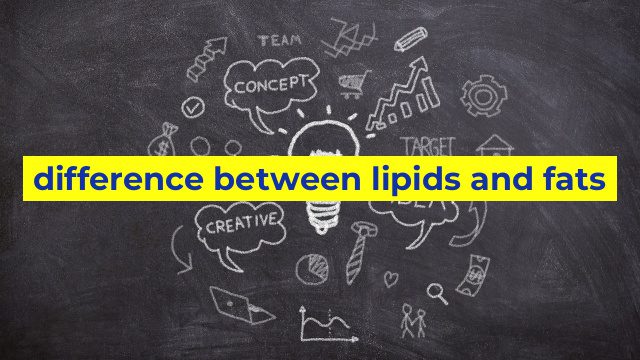Difference Between Lipids and Fats: Exploring the Basics
What are Lipids?
Lipids are macronutrients, like carbohydrates and proteins, which are essential for the proper functioning of the body. They are also commonly referred to as fats, but not all lipids are fats. Lipids are organic compounds made up of chains of carbon, hydrogen, and other elements including oxygen, nitrogen, and sulfur. They are hydrophobic, meaning they do not mix with water.
What are Fats?
Fats are a type of lipid, which are essential for daily functioning of the body. Fats are a condensed form of energy and are helpful in cushioning organs, maintaining cell health, and regulating hormones. Technically, all fats are lipids, but not all lipids are fats. Fats are a form of energy which also gives us the feeling of satisfaction, and help our bodies absorb vitamins A, D, E, and K.
The Main Differences Between Lipids and Fats
Although fats are considered a type of lipid, there are several differences between the two. Firstly, fats are solid at room temperature, whereas lipids can be solid or liquid. Secondly, fats are mainly found in animal products like meat, egg yolks, and milk, while lipids are found in plant oils and animal products as well. Thirdly, while all fats are considered lipids, not all lipids provide energy like fats do.
Conclusion
In conclusion, the difference between lipids and fats can be confusing for some individuals. They are both crucial for our daily functioning, but not all lipids are fats. Lipids can be solid or liquid, while fats are always solid. Fats are found in animal products, while lipids are found in both plant and animal sources. Understanding these concepts can help to make informed decisions when it comes to choosing a healthy diet.
Table difference between lipids and fats
| Category | Lipids | Fats |
|---|---|---|
| Definition | Lipids are a broad group of molecules that includes fats, oils, waxes, and steroids. They are organic compounds that are insoluble in water but soluble in organic solvents like alcohol and chloroform. | Fats are a type of lipid that are solid at room temperature. They are made up of fatty acids and glycerol and are commonly found in animal products like meat, dairy, and eggs. |
| Composition | Lipids can be made up of a variety of components, including fatty acids, glycerol, phosopholipids, and sterols. | Fats are made up of three fatty acids and one molecule of glycerol. |
| Function | Lipids have a variety of important functions in the body, including energy storage, insulation, and signaling. | Fats are primarily used for energy storage in the body. |
| Sources in Diet | Lipids are found in a variety of foods, including meats, dairy products, nuts, and oils. | Fats are primarily found in animal products like meat, dairy, and eggs, as well as some plant sources like avocado and nuts. |
| Types | Lipids can be divided into several different categories, including fats, oils, waxes, and steroids. | Fats can be divided into several different types based on the types of fatty acids present, including saturated, unsaturated, and trans fats. |

